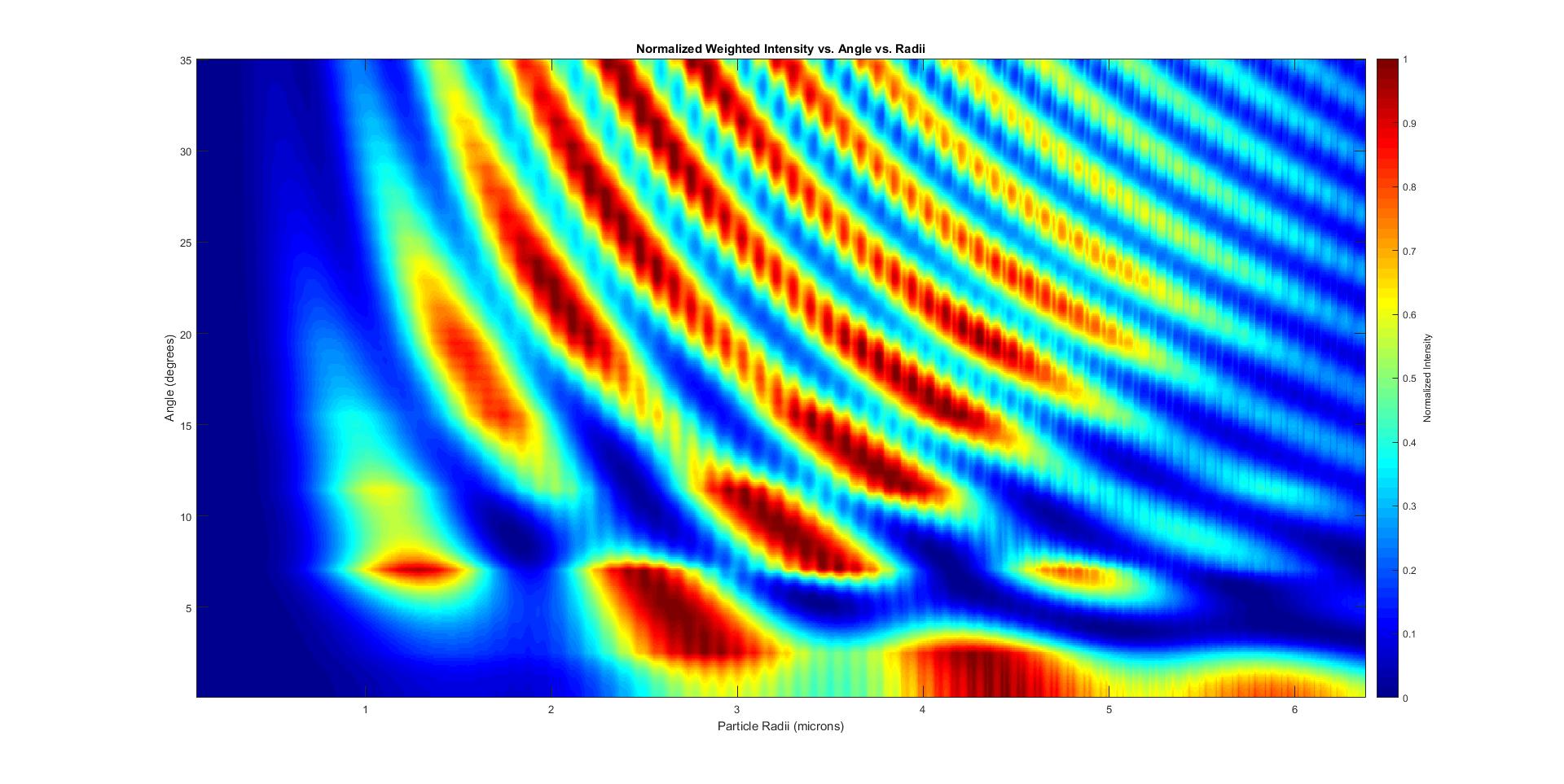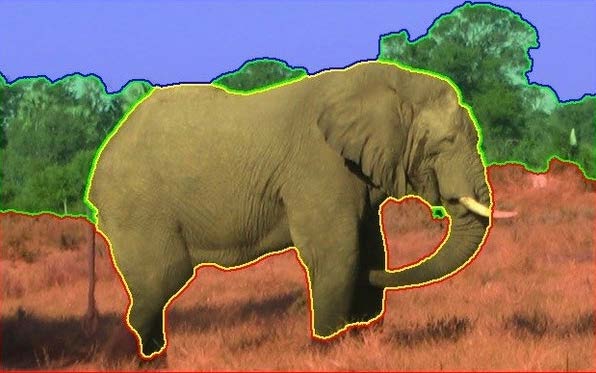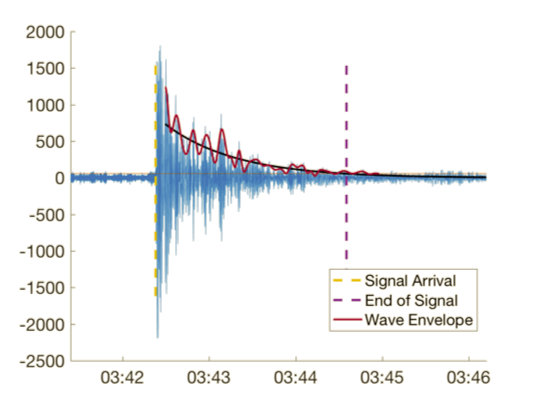1-10 of 10 results
-
2017 PICMath: Mie Scattering Diagnostic
PI Mihhail Berezovski
CO-I Clayton Birchenough
CO-I Christopher Swinford
CO-I Tilden Roberson
CO-I Sophie Jorgensen

The Signal Processing and Applied Mathematics Research Group at the Nevada National Security Site teamed up with Embry-Riddle Aeronautical University (ERAU) to collaborate on a research project under the framework of PIC math program with challenge to make a recommendation about whether to use a technique, used in the air quality industry, called Mie scattering, and repurpose this method to measure particle sizes that are emitted from a metal surface when it's shocked by explosives.
Support for this project is provided by MAA PIC Math (Preparation for Industrial Careers in Mathematics) Program funded by the National Science Foundation (NSF grant DMS-1345499).
The Signal Processing and Applied Mathematics Research Group at the Nevada National Security Site (NNSS) teamed up with Embry-Riddle Aeronautical University (ERAU) to collaborate on a research project under the framework of MAA PIC math program with challenge to make a recommendation about whether to use a technique, used in the air quality industry, called Mie scattering, and repurpose this method to measure particle sizes that are emitted from a metal surface when it's shocked by explosives.
Using simulated data derived from Mie scattering theory and existing codes provided by NNSS students validated the simulated measurement system. The construction data procedure was implemented with an additional choice of discretization technique: randomly distributed particle radii and incrementally discretized particle radii. The critical regions of sensors position were determined.
Support for this project is provided by MAA PIC Math (Preparation for Industrial Careers in Mathematics) Program funded by the National Science Foundation (NSF grant DMS-1345499).
Major outcomes:
- Team presented results at 2017 MathFest as poster presentation
- Results were presented at ERAU campus show case
- Results were presented at 2018 ERAU Discovery Day
- Clayton Birchenough got internship with Nevada National Security Site for Summer 2017 and Summer 2018
Results were published in:
Kasey Bray, Clayton Birchenough, Marylesa Howard, and Aaron Luttman. (2017) Mie scattering analysis, National Security Technologies, LLC internal report. - Tilden Roberson got CO-OP with NASA's Armstrong Flight Research Center for fall 2017
- Tilden Roberson is currently pursuing his Master Degree at ERAU
- Joao Rocha Belmonte got internship in Germany with MTU Aero Engines for fall 2017
- Joao Rocha Belmonte is currently pursuing his Master Degree at ERAU
- Clayton Birchenough won 2nd place for poster presentation at 2018 ERAU Discovery Day
Categories: Undergraduate
-
ERAU Industrial Math Project: Quantifying Uncertainties in Image Segmentation
PI Mihhail Berezovski
CO-I Jean-Lucien Gionet
CO-I Tori Hoff

The Signal Processing and Applied Mathematics research group at the Nevada National Security Site (NNSS) is excited to partner with students at Embry-Riddle Aeronautical University to develop a rigorous statistical method for characterizing the effects of user interaction on supervised image segmentation.
One of the most important methods for understanding dynamic material experiments, like high-explosives driven implosion studies or laser driven shock studies, is to take pictures of some type and perform quantitative analyses of the images. In many cases, what we are most interested in are regions of different materials in an image or regions of the same material in different states. The concept of image segmentation is the process of separating different parts of an image into different categories.
Google Scholar returns about 2.3M results for image segmentation, so there are a lot of ways to do it. Most such ways, however, fall into the category of qualitative image analysis, which means one just wants to recognize whether an object exists in an image or make qualitative statements about the different regions of an image. Scientific analysis of experiments requires quantitative imaging, and it is important to accurately find the boundaries between the different regions, as well as assess the uncertainties associated with the boundaries. In some sense, we would like to draw error bars around the boundary curves. In order to accomplish this, our team at the NNSS has developed a new statistical method for image segmentation, called Locally Adaptive Discriminant Analysis (LADA).
Because this algorithm provides quantitative analysis of material boundary locations based on local information, enough local information must first be provided to be of practical use. Here, the user must select a large portion of the image as training data to aid in the identification of the boundaries. The purpose of informing the algorithm through local information is due to the fact that our images often change in intensity depending on where the material is located in the image,
for example, due to lighting heterogeneity. The issue is that there are different portions of that image with different intensities that correspond to the same material. By selecting training data only locally, the algorithm doesn't get confused by training data of the same material in different regions of the image.The primary questions that we would like the ERAU team to address are
1. How do the boundaries that are computed by LADA vary, as the user-selected training data are varied? (If two people select different training data, how different are the resulting boundaries?)2. How does one even quantify the differences between two sets of boundaries computed for the same region?
3. How do the confidence bands that are computed by LADA vary, as the user-selected training data are varied?
4. How does one quantify the differences between two sets of confidence bands for a region's boundary?
5. Can we quantify how boundaries and uncertainties are affected by the sheer amount of training data provided? (Does doubling the amount of training data cut the uncertainties in half?)Categories: Undergraduate
-
ERAU Industrial Math Project: Predictive Analytics in Child Welfare
PI Mihhail Berezovski
CO-I Maegan Revak
CO-I Daniel Oldham
CO-I Betiay Babacan
CO-I Nathan Foster

The purpose of this project is to study the data provided by Partnership for Strong Families (PSF) and identify any factors that could lead to a child being removed from his/her home multiple times.
The Partnership for Strong Families (PSF) is a child welfare organization headquartered in Gainesville, Florida helping to serve 13 counties in northern Florida. PSF is a service provider for The Florida Department of Children and Families (DCF). DCF estimates that, within PSF’s area, approximately 45 children are removed every month from their parents’ (or guardians’) care. This is equivalent to approximately 5-6 children per 100 alleged victims of child abuse.
There is a clear need to identify, as early as possible, children who are at risk. As more data is collected, tracking methodologies need to be developed to predict the likelihood of a child entering (or reentering) the state system. The purpose of this project is to examine removals within PSF’s area over the last 7 years and to potentially identify factors that lead to a child’s re-entry into the state shelter system.Children are removed from their parents’/guardians’ care due to verified findings of allegations called into the Hotline. Parents are given a Case Plan to complete to provide them with the tools for the children to return safely to their family home. Reunification occurs once PSF, DCF and the Court agree that the children should be safe in the home when returned.
In generic terms, we will attempt to look at children who were separated from their parents then reunified at some later point. The question is whether there are any quantifiable indicators within the case that, when assigned an unknown weight, will determine whether we can predict a child will be removed again. If there’s a relatively high likelihood of removal, then perhaps services can be provided to the family to ensure the child will be safe and not need to be removed.
This project is sponsored by ERAU Office of Undergraduate Research through IGNITE grant.
Categories: Undergraduate
-
ERAU Industrial Math Project: OneSky Optimization
PI Mihhail Berezovski
CO-I Jose Gachancipa Parga
CO-I Timothy Mitchell
CO-I Ian Young
CO-I Ian Mungovan

OneSky Flight supports the technology needs of five established private jet brands: Flexjet, Sentient Jet, SkyJet, PrivateFly, and Sirio. One key function required by these businesses is fleet optimization. The ultimate goal for the OneSky Optimization project is to create a new optimizer that works across all of the OneSky brands.
This is the exercise of matching available aircraft with trips that need to be flown for customers. There are many possible conditions, stipulations, and goals in fleet optimization depending on the business. For instance, Flexjet is a fractional ownership brand that has its own fleet of aircraft that is used to meet owner needs. However, Sentient is a charter broker brand that does not own any aircraft, and instead, works with various operators’ aircraft to meet customer needs. In working with Embry-Riddle Aeronautical University, we hope to develop our own optimization algorithms and solvers to eliminate the need for the mathematical engine, CPLEX, which is currently being used.
One strategy that has been used for this type of problem is to create a set of ten to twenty optimization algorithms, develop heuristics that take care of constraints, utilize machine learning to train the algorithms based on historical data, and create criteria for identifying the best solution from the set of results.Categories: Undergraduate
-
ERAU Industrial Math Project: Characterizing Seismic Events through Advanced Data Analytics
PI Mihhail Berezovski
CO-I Lawrence Acchione
CO-I Nathaniel Arzola Lilly
CO-I Dhairya Chokshi
CO-I Jessica Haselwood
CO-I Paige Rasmussen
CO-I Nikolaus Rentzke

The Signal Processing and Applied Mathematics research group at the Nevada National Security Site, is seeking to collaborate with students at Embry-Riddle Aeronautical University to develop advanced data analytics methods for characterizing seismic events in the southwest United States as near-field earthquakes, far-field earthquakes, or non-natural seismic events, using publicly available seismic data.
One way of monitoring whether other countries are engaging in explosives-driven testing of weapons is to measure seismicity from the events, but this is only interesting if we can correctly characterize a seismic event as an:
- earthquake,
- industrial explosives event (mining, construction, etc.),
- or an explosives test.
The first step is to simply be able to distinguish between natural and non-natural seismic events. Since the Nevada National Security Site engages in explosives-driven tests - and is in an area of active earthquake activity - it is a natural test bed for developing data analytics approaches to classifying signals as natural or non-natural. Being a "test bed" means that, in addition to the measured signals, we have some ground truth information, meaning we know when earthquakes and explosives tests actually happen.
Larger-scale experiments, like the North Korean nuclear tests, can be seen at much larger distances, so even in Nevada we can measure seismic signals from nuclear tests. Figure shows a seismic measurement in Nevada from North Korea's September 2017 nuclear test.
Primary Goal: Develop analytics methods for differentiating near- field, small earthquakes in Nevada and southern California, from far- field, large earthquakes around the world, from non-natural seismic events.
One of the primary challenges in analyzing seismic data is that the data is collected 24 hours per day, 7 days a week, but actual seismic anomalies - either natural or not - occur relatively rarely.
Thus a first step in the analytics is to develop a technique for combing through the data to find anything that looks like an anomaly. The second task will be to classify the anomalies.Categories: Undergraduate
-
NREUP: Predictive Analytics for Dynamic Pricing in Private Aviation
PI Mihhail Berezovski
CO-I Mariah Marin
CO-I Camryn Wills
CO-I Mafalda Soares

OneSky Flight supports the technology needs of four established private jet brands; Flexjet, Sentient Jet, PrivateFly, and Sirio. One key function required by these businesses is trip pricing. This is the exercise of determining the appropriate price for a trip, considering many factors. Today, this process is manual. The ultimate goal of this project is to create a dynamic pricing tool that generates an appropriate price for trips in the US and EU. There is a large part of this project that needs to be addressed: Event Calendar. The Event Calendar includes a factor for each day of the year. These factors are based on the events/holidays that happen throughout the year and their impact on the demand for days on and surrounding the events/holidays. Support for this project is provided by the National Research Experience for Undergraduates Program (NREUP) of the Mathematical Association of America funded by the NSF Grant #1950644.
OneSky Flight supports the technology needs of four established private jet brands; Flexjet, Sentient Jet, PrivateFly, and Sirio. One key function required by these businesses is trip pricing. This is the exercise of determining the appropriate price for a trip, considering many factors. Today, this process is manual. The ultimate goal of this project is to create a dynamic pricing tool that generates an appropriate price for trips in the US and EU. There is a large part of this project that needs to be addressed: Event Calendar. The Event Calendar includes a factor for each day of the year. These factors are based on the events/holidays that happen throughout the year and their impact on the demand for days on and surrounding the events/holidays.
In order to build the list of possible events that affect the intensity of flights extended data analysis was performed. Along with processing 3 years of raw flight data (~8,000,000 single flights), students did independent research on theory behind dynamic pricing. Team determined the patterns in raw data and identify anomalies as possible event, mapping them and sorting them in holidays, sport events, extreme weather events, etc. based on open sources, also recognized the local and global patterns before identification. The corresponding quantitatively model for model of dynamic pricing algorithm was developed. It is the hierarchical model with primary and secondary factors: considering normal weekly traffic, seasonal increments, and day of the week of a selected event. With given three years of flight history, model was build using any two years and validated using third on: the prediction of demand for third year was modeled and compared with third year actual data.
Support for this project is provided by the National Research Experience for Undergraduates Program (NREUP) of the Mathematical Association of America funded by the NSF Grant #1950644.
Categories: Undergraduate
-
Eco-Dolphin
PI Hong Liu
CO-I Zakaria Daud
CO-I Ci Wen
CO-I Dynamite Obinna
Eco-Dolphin is the name of a fleet of adaptive and cooperative automated underwater vehicles (AUVs) that a team of students at ERAU have been working on since January 2012.
By 2015, the platforms of the AUVs and basic navigation programs were tested. One of the major success is the demonstration of the Yellow Dolphin where four NASA astronauts participated in the NASA Extreme Environmental Mission Operation (NEEMO) during an event in the summer of 2014. Since 2015, the team started developing and testing the autonomous mission control programs based on the MOOS-IvP middleware developed by MIT and Oxford. Two peer reviewed conference proceedings with student coauthors were published. Students gave two to three presentations each year, including
- FURC, Florida Undergraduate Research Conferences 2012, 2013 and 2014
- SIAM SEA conference in FIT Melbourne, FL 2014
- CASE 2014 Creativity in the Arts and Sciences Event
- A3I Conference at Prescott Campus, 2014
- Discovery Day at Daytona Beach Campus, 2014
- Embry-Riddle Undergraduate Math Conference
- SIAM National Annual Conference
Categories: Undergraduate
-
Large Amplitude Electromagnetic Waves in the Radiation Belt
CO-I Miles Bengtson
CO-I Anatoly Streltsov
When the first American satellite, Explorer I, was launched into space it inadvertently discovered one of the most significant features of our local space environment: the Van Allen Radiation Belts. This region contains highly energetic particles that are hazardous. This research involves one promising remediation mechanism based on interactions between these particles and very-low frequency electromagnetic waves known as whistlers.
The Van Allen Radiation Belt is a region in the near-Earth space populated with high-energy, electrically charged particles. Because of their very high energy, these particles present a significant threat to low-Earth orbiting satellites, the International Space Station, and its human crew. The radiation damage to satellite electronics increases when the amount of energetic particles in the radiation belt increases by a factor of 10 or 100 due to the plasma eruptions on the Sun or the high-altitude nuclear explosions. Results from high-altitude nuclear tests produced in 1968 combined with modern computer simulations demonstrate that even a relatively "modest" nuclear explosion (equivalent to a few tenths of kilotons in TNT) in the upper atmosphere can reduce the lifetime of many very important and expensive commercial, military, intelligence, and communication satellites from years to months. Therefore, it is a matter of national security to develop a solid understanding of the basic physics of remediation of energetic particles from the space. One possible way to achieve this goal is to use large amplitude electromagnetic waves. They can efficiently interact with energetic particles and precipitate them from the magnetosphere into the atmosphere. We will study the observations of large-amplitude whistlers detected by the Van Allen Probes satellites in the radiation belt. We also will model these waves with comprehensive numerical models and compare the numerical results with the observed wave dynamics in the magnetosphere. The results from this project are very important for future experiments including launching waves into the radiation belt from ground antennas (like HAARP and Arecibo) or from space platforms.Categories: Undergraduate
-
Generational Violence: Examining the Radicalization Process of Northern Ireland’s Youth
CO-I Sean Herman
CO-I Amy Grubb
This project seeks to understand the mechanism by which young people are becoming radicalized members of paramilitary organizations on both the Republican and Loyalist sides of the conflict.
With the 100th anniversary of Irish independence being marked this year, there is expected to be an increase in violent activity among paramilitary groups representing both sides of the conflict in Northern Ireland. Among these paramilitaries are an increasing number of young people who did not live through The Troubles of the 1970’s and 1980’s. This project will be conducted using qualitative analysis of primary and secondary sources, including interviews with scholars and representatives from government and non-government agencies, and archival data.
Categories: Undergraduate
-
Oil for Terrorism: Examining the Effectiveness of Western Intervention in ISIS’s Oil Smuggling
CO-I Rae Heuer
CO-I Elisabeth Murray
The Terrorist organization ISIS has been identified as a violent, radical group that poses a threat to both the regional and international arena. By gathering both primary and secondary research data from foreign and domestic sources, this project investigates whether ending ISIS’s oil smuggling would decrease ISIS’s strength, power, and influence as a terrorist organization.
ISIS is, to date, the richest jihadi terrorist organization. It has several forms of revenue; however, smuggling and exporting oil from conquered facilities in Syria and Iraq is by far the most profitable, potentially bringing in millions of dollars a day. Due to the nature of terrorist organizations, ISIS does not have many expenses, giving it the ability to greatly increase its assets on an annual basis. For centuries, money has been shown to lead both power and influence. By gathering both primary and secondary research data from foreign and domestic sources, this project investigates whether ending ISIS’s oil smuggling would decrease ISIS’s strength, power, and influence as a terrorist organization.Categories: Undergraduate
1-10 of 10 results
